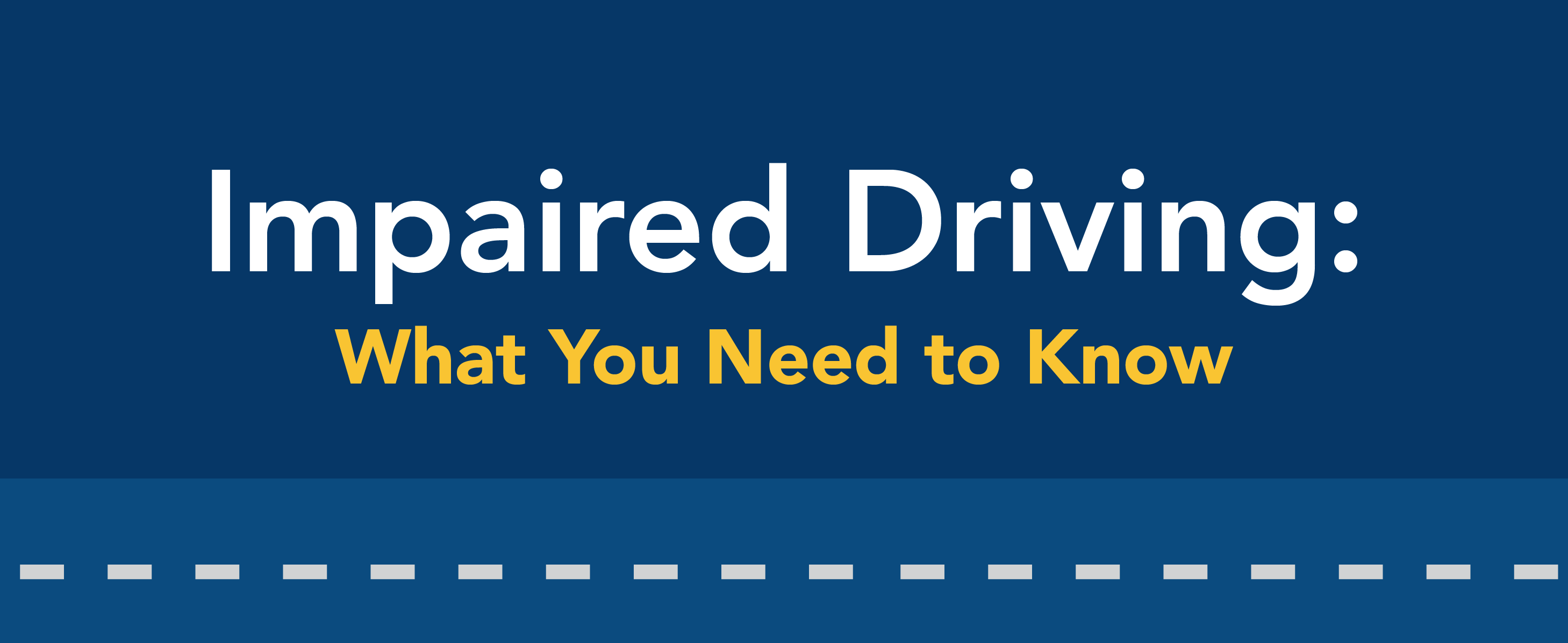
Impaired driving is currently the leading cause of death in motor vehicle crashes. Impaired driving is a problem at all times and days of the week. “Driving Under the Influence” is defined as operating a motor vehicle while impaired by alcohol, other drugs including cannabis (marijuana) prescribed for medical purposes, or intoxicating compounds and methamphetamine. In Illinois, a driver is legally considered to be under the influence if he/she has a blood-alcohol content (BAC) of .08 or more, has used any illegal substance, or is impaired by medication.
Mind-Altering Substances to Avoid While Driving
Alcohol is not the only drug that can affect our ability to drive. There are numerous other substances that impair driving — many of which you might not even know about.
- Depressants. Depressants slow down the central nervous system. A driver can experience slower reaction time, reduced alertness, impaired coordination and depressed motor skills. Examples of depressants include: alcohol, barbiturates and tranquilizers.
- Narcotics. Narcotics are a depressant that evoke a feeling of euphoria. A driver may suffer visual impairment, loss of concentration, slower reaction time and impaired motor skills. Examples of narcotics include: heroin, morphine.
- Stimulants. Stimulants speed up the central nervous system. A driver may notice emotional and psychological effects such as overreacting, aggression, hostility, impatience or impulsiveness, as well as impaired coordination. Examples of stimulants include: caffeine, nicotine, amphetamines and cocaine.
- Hallucinogens. Change the way a person thinks, sees and acts. These are called “mind-altering” drugs. Drivers may experience visual distortion, aggressiveness, violent behavior, time or distance distortion, short-term memory loss and slower reaction time. Examples of hallucinogens include: marijuana, hashish, LSD and PCP.
The most commonly used substance is alcohol. As a driver, you need to know what BAC is and be aware of how it personally affects you. A driver’s BAC is based on the ratio of alcohol to blood or breath. However, an individual with a BAC between .05 and .08 may be convicted of DUI if additional evidence shows the driver was impaired.
The effect of alcohol on an individual is determined primarily by two factors:
- The amount of alcohol consumed.
- The rate at which it is absorbed by the body. Gender, body weight, alcohol tolerance, mood, environment and the amount of food in the body specifically relates to absorption.
From the first drink, alcohol affects coordination and judgment. The risk of being in a crash begins to climb with a BAC between .04 and .05 and increases rapidly thereafter. By the time a driver reaches a BAC of .06, he/she is twice as likely to be involved in a fatal crash as a non-drinking driver. By the time a driver reaches a BAC of .08, he/she is 11 times more likely to be killed in a single-vehicle crash than a sober driver.
Common Misconceptions of Alcohol Consumption
The only way to rid the body of alcohol is time. It takes about one hour for the body to metabolize one drink. Some common misinformation is that certain items/foods can sober a person up enough to drive.
Some common myths include:
- Getting fresh air
- Consuming a cup or two of coffee
- Taking a cold shower
- Eating food
- Drinking glass after glass of water
- Vigorous exercise
While some of these may slow absorption or eliminate a very small amount of alcohol from your system, none of them will make you sober enough to legally drive. Absolutely zero of them will make you a safer driver.
What’s the Legal Limit for Drivers Under 21?
.00. That’s right, none for you. Drivers under age 21 face a minimum 2-year driver’s license revocation for a first DUI conviction in addition to the penalties that apply for DUI offenders age 21 and older. For offenders under age 18, it’s a little different. Those under 18 on a statutory summary suspension are not eligible for an MDDP and may be subject to remedial education and/or retesting prior to reinstatement of his/her driving privileges. You may also be ordered by a judge, as a condition of probation or discharge, to participate in the Youthful Intoxicated Driver’s Visitation Program.
Remember, even if you are not driving a vehicle your license can be revoked if you are charged with an alcohol or drug related offense. Any person under age 21 convicted of violating the Liquor Control Act for the illegal purchase, possession, receipt or consumption of alcohol will have his/her driving privileges suspended for 6 months for a first conviction, 12 months for a second conviction and revocation of driving privileges for a subsequent conviction.
Sober Driving is Safe Driving
Driving is a privilege, not a right. If involved in a personal injury or death crash, law enforcement has probable cause to believe you were impaired and must request a drug or alcohol test. If you refuse a breath test or if an officer believes that a blood test may disclose the presence of drugs, you may be held financially liable and face DUI charges.
Interested in learning more? Click here to check out our full list of Top Driver safe driving tips.
